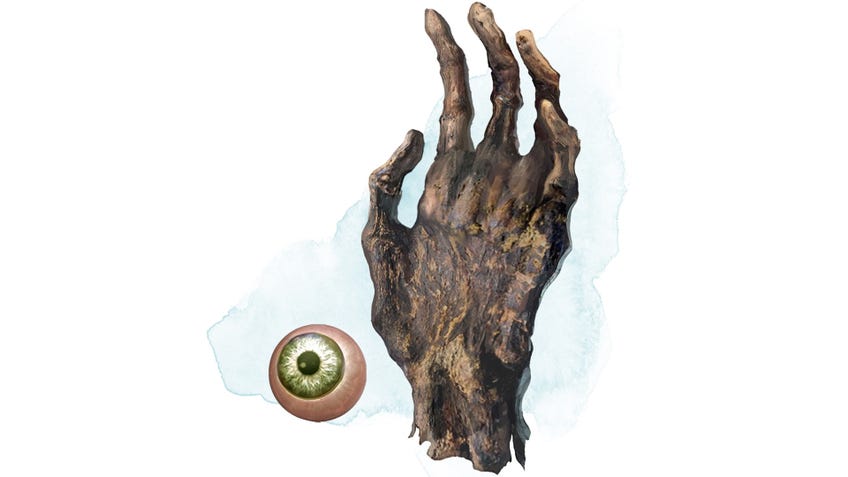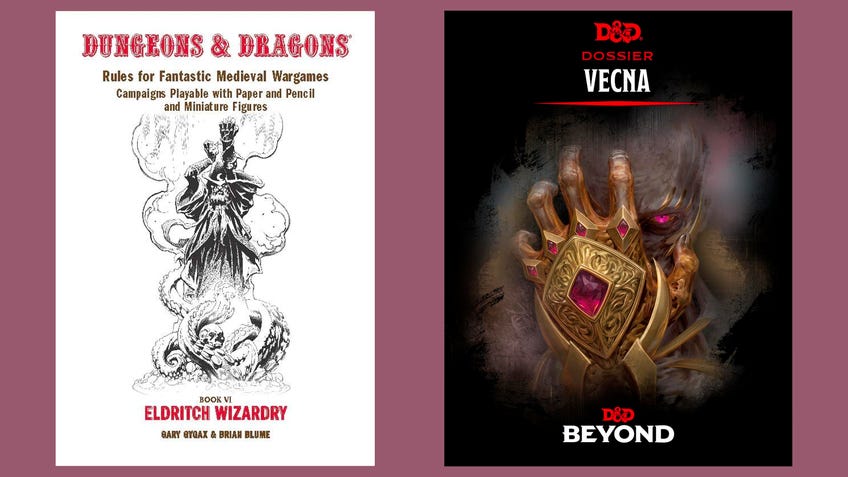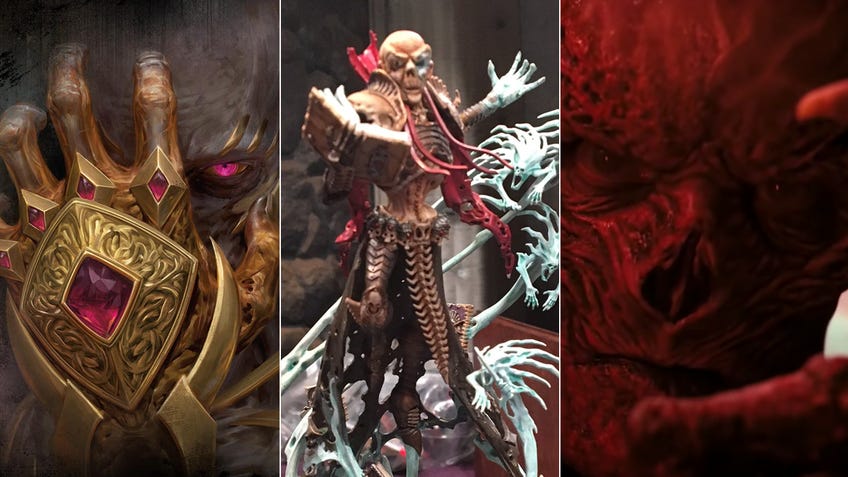Who is Vecna? Everything you should know about the D&D, Stranger Things and Critical Role villain
Diving into one of Dungeons & Dragons’ biggest bads.
Been hearing the name Vecna a lot in recent days and aren’t quite sure what all the fuss is about? Don’t feel bad. Long story short: Vecna is a villain from Dungeons & Dragons. Vecna has been around since 1976 and has appeared in various forms in virtually every edition of D&D, starting as merely a disembodied hand and eyeball, before later appearing as the fully incorporated archlich and god that he is depicted as today. He has also shown up in Critical Role’s first campaign, Vox Machina, and most recently his name was borrowed for another character in season four of Netflix’s Stranger Things.
As D&D lore goes, Vecna was born over a hundred thousand years ago in the Greyhawk world of Oerth, the son of a hedge witch who was exiled for practising necromancy. Over time, he learned that and other kinds of dark magic for himself. In the course of his life, he heeded the dark voices in his head and conquered vast realms and cities from the comfort of an obsidian tower. Eventually instead of succumbing to death, he chose undeath as a hateful lich. Here’s a breakdown of the most important things you should know about one of D&D’s greatest villains.
1. Vecna got his start as a couple of magic items

Vecna first appeared in 1976’s Eldritch Wizardry, a supplement for the original Dungeon & Dragons rules. Co-author Brian Blume named two artefacts in the supplement: the Hand of Vecna and the Eye of Vecna. These were alleged to be the only remnants of a terribly powerful lich of the same name who had been defeated ages ago. These artefacts could be discovered by your player character but, to assume their evil powers, your character would need to sever or remove their own (left) hand or (left) eye and replace it with Vecna’s body part. If they made the hefty commitment of adopting these parts of Vecna, they could enjoy a powerful array of spells - at the cost of potentially dividing your party due to the unequal distribution of evil power.
Vecna is also known for creating the Book of Vile Darkness, a darkly powerful magic item which can cause as many problems for your party as Vecna’s hand or eye!
2. He has appeared in every version of D&D

Vecna has appeared in every version of Dungeons & Dragons in one way or another. Following his hand and eye’s appearance in Eldritch Wizardry, those two body parts were again mentioned in 1979’s Dungeon Master’s Guide. A description of his history was later expanded in 1989’s Advanced Dungeons & Dragons 2E, and appeared with a full body and demi-god status in a number of adventure supplements for that edition.
By D&D 3E and 3.5E, Vecna was granted god status and included in the game’s “core pantheon”. In D&D 4E, Vecna remained a god. That continued on into D&D 5E, where he is listed as a member of the Dawn War Pantheon in the 5E Dungeon Master’s Guide, as well as one of the deities of the Greyhawk setting in the 5E Player’s Handbook. D&D publisher Wizards of the Coast also recently released a free dossier on Vecna that included a brief summary of his lore and a 5E stat block.
3. He has appeared in Critical Role
The Hand of Vecna appeared in the final story arc of the first season of Critical Role, during the Vox Machina campaign.
Spoiler warning: Major spoilers follow for Campaign 1 of Critical Role, which aired in 2015.
In the show, Joe Manganiello’s character Arkhan violently steals the hand and replaces his own with it (the only proper way to use the relic). This character, as well as what he did with the powerful relic, became D&D canon when it was included in the 2019 adventure module Baldur’s Gate: Descent Into Avernus. Naturally, Vecna also comes up in the official Critical Role campaign sourcebook, Explorer’s Guide to Wildemount.
4. He is featured in Stranger Things Season 4, sort of…
Spoiler warning: This entry contains a very minor spoiler for Season 4 of Stranger Things.
In the fourth season of Netflix’s Stranger Things, the teenage protagonists are shown playing D&D and facing off with the final nemesis of their long campaign - none other than Vecna. But when a real-life sorcerer who appears to be undead begins terrorising their small town, the characters name this sorcerer Vecna.
In terms of D&D lore, there is no connection between the two Vecnas. The Vecna in Stranger Things is merely named that by the protagonists who needed to call this mysterious sorcerer something - and that was the most logical name they could think of on the spot. The characters continue to call the creature Vecna throughout the entirety of the season, even after discovering the villain’s true identity.
5. He can be defeated

Despite being elevated to god status at some point during the course of his lore history, Vecna can be defeated. If you are using 5E rules, you can refer to Vecna’s stat block and deduce his weaknesses in combat. There are two important notes here. The first is that although Vecna is presented as a killable monster in the game, it is only because this stat block represents him prior to his ascent to godhood. If, as the DM, you need some excuse as to why he is in his weaker, killable form, take note that he has mastered magic that allows him to travel through time. Thus his appearance as a mortal could be a result of such temporal travels.
The second important note here is that he’s still not easy to defeat. Some of his most notable features are that he has 32d8 + 128 hitpoints, five legendary resistances per day and can cast a counterspell as a reaction once per turn. It’s probably also worth mentioning that when you defeat Vecna, he never really dies. His soul fashions a new body for itself in 1d100 years. What did you expect? This is Vecna after all.


